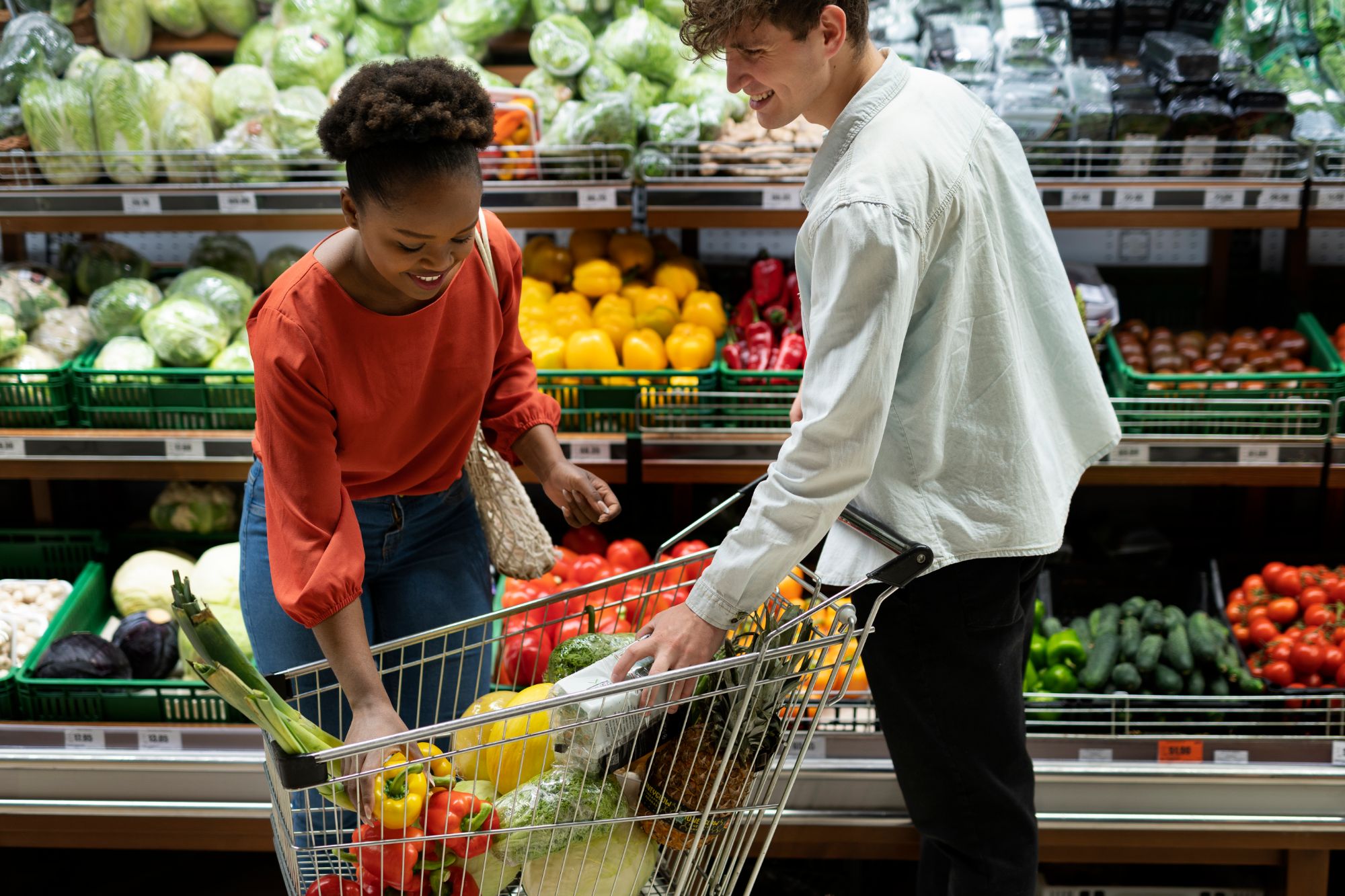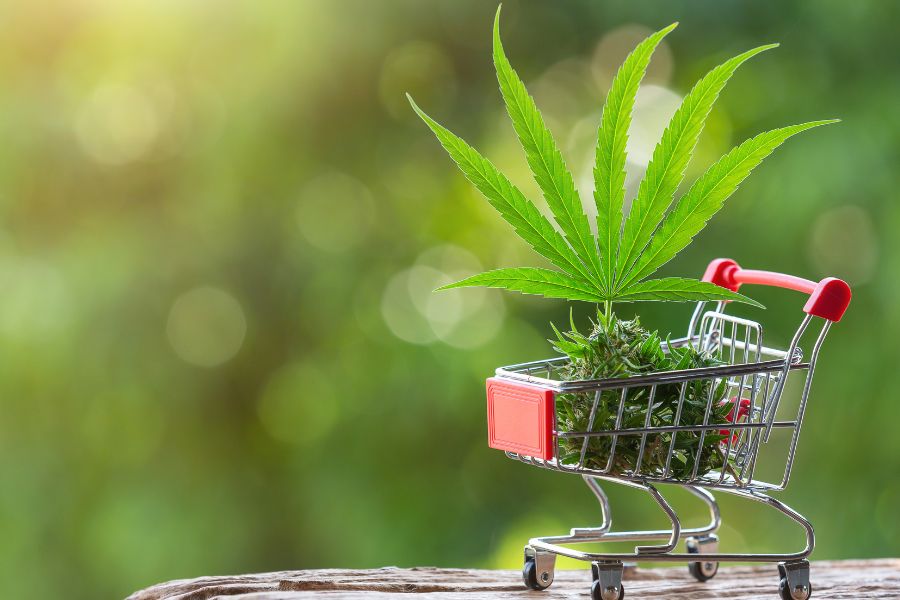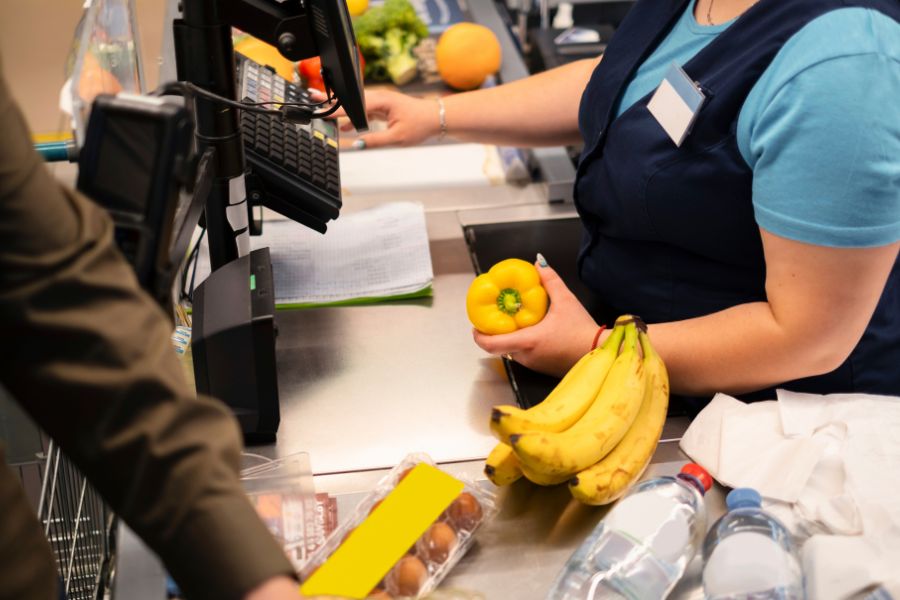The humble shopping cart, a seemingly simple companion in every grocery store, conceals a complexity of considerations influencing its cost. In this exploration, we delve into the dynamics of “How much does a grocery store shopping cart cost?” From traditional designs to the integration of cutting-edge technologies, the intricacies of manufacturing, maintenance, and evolving consumer preferences shape this indispensable tool. Join us as we unravel the facets impacting the cost of a grocery store shopping cart.
The indispensable role of shopping carts in the grocery store experience
- The definition of a grocery store shopping cart: the grocery store shopping cart is an indispensable element intricately woven into the fabric of the modern shopping experience. Beyond its apparent functionality of carrying items, the shopping cart plays a pivotal role in shaping customer convenience, operational efficiency, and overall satisfaction.
- How much does a grocery store shopping cart cost?: The cost of a shopping cart is not merely a financial consideration; it encompasses the value it adds to the overall retail ecosystem.
- Traditional carts: With their basic components and sturdy design, they serve as reliable aids in the shopping process. The materials used, manufacturing intricacies, and maintenance contribute to the cost dynamics associated with these trusted companions.
- Technology’s influence on cost: however, as technology advances, the role of shopping carts is evolving. Modern trends, such as self-checkout systems and facial recognition technology, are gradually redefining the shopping cart landscape. Addressing the cost implications of these innovations becomes crucial for retailers seeking to enhance customer experiences while maintaining operational efficiency.
- Tradition meets innovation: in this intricate dance between tradition and innovation, the shopping cart emerges as a symbol of adaptability. Its cost extends beyond tangible expenses, reflecting the investment in customer satisfaction, operational streamlining, and the seamless convergence of technology with everyday retail practices. Understanding the multifaceted nature of shopping cart costs becomes paramount in shaping the future of grocery retail, where the shopping cart remains an essential and evolving element in the art of shopping.
Traditional shopping cart costs
A typical grocery store uses a simple plastic cart that costs between $50 and $100. But stronger and bigger carts for business or industry can be much more valuable.
Basic cart components
- Examination of essential elements: traditional shopping carts consist of fundamental elements crucial to their functionality. The frame, wheels, handles, and basket are key components. The examination of these components provides insights into the cart’s structural integrity and durability.
- Material, design, and construction considerations: the material choices, design intricacies, and construction methods significantly influence the overall cost of traditional shopping carts. High-quality materials and intricate designs may lead to a higher upfront cost but can contribute to longevity and user satisfaction.
Manufacturing and mass production:
- Insights into the manufacturing process: understanding the manufacturing process is essential to grasp the intricacies of traditional cart production. This involves the selection of materials, assembly techniques, and the incorporation of additional features. These factors collectively impact the cost structure.
- How mass production affects the overall cost: traditional carts often undergo mass production to meet the demands of retailers. Mass production introduces economies of scale, reducing the cost per unit. Analyzing how mass production influences costs provides a comprehensive view of market dynamics.
Maintenance and replacement:
- Ongoing costs related to maintenance: cart maintenance is an ongoing concern for retailers. Regular upkeep, repairs, and replacement of damaged components contribute to the total cost of ownership. Regular maintenance is essential to ensure carts remain in optimal condition.
- Frequency and expenses of cart replacement: the frequency at which traditional carts need replacement is a critical factor. Factors such as wear and tear, exposure to the elements, and customer usage patterns influence the lifespan of a cart. Understanding replacement expenses aids in budgeting and long-term planning.
Evolution of shopping carts
Emerging technologies in grocery shopping
- Smart carts and IoT integration: integration of IoT sensors and technology into shopping carts for a smart, connected shopping experience. Enhanced functionalities, such as real-time inventory tracking and personalized shopping recommendations. The potential impact of these advancements on overall shopping cart costs aligns with the query “How much does a grocery store shopping cart cost?”
- Contactless checkout solutions: implementation of contactless payment methods and cashier-less checkout options. Improved convenience and hygiene, especially in response to global health concerns. The influence of contactless technologies on customer satisfaction and operational efficiency.
- Mobile apps and augmented reality (AR): utilization of mobile apps with AR features to enhance in-store navigation and product information. Augmented reality applications allow customers to visualize products in their real-world context. The role of mobile-centric technologies in transforming the customer shopping journey.
- Data-driven personalization: utilizing customer data for personalized shopping experiences, from product recommendations to promotions. Targeted marketing strategies based on shopping history and preferences. Balancing the benefits of personalized experiences with privacy considerations.
Overview of modern trends transforming the grocery shopping experience
Modern trends are ushering in a new era of grocery shopping, characterized by innovations that streamline the entire process and elevate customer satisfaction.
- Impact on traditional cart usage: self-checkout systems have revolutionized the way customers interact with shopping carts. With the seamless integration of self-checkout features, traditional cart usage undergoes a significant transformation. ConnectPOS, a pioneer in point-of-sale solutions, introduces cutting-edge self-checkout systems that seamlessly blend with the shopping experience, offering a new level of autonomy to customers.
- Integration in the shopping process: facial recognition technology is at the forefront of enhancing customer convenience. The integration of facial recognition in the shopping process redefines how customers interact with carts. ConnectPOS leads in this arena by seamlessly incorporating facial recognition features, adding a layer of personalized and secure interactions to the shopping experience.
- Balancing benefits and concerns: the benefits of facial recognition, including quick and secure transactions, are explored alongside privacy concerns. ConnectPOS ensures a balanced approach, addressing the benefits while actively managing and mitigating privacy-related concerns. The integration of facial recognition is positioned as a valuable asset without compromising customer trust.
The role of technology in enhancing customer convenience
Technology plays a pivotal role in elevating customer convenience throughout the shopping journey. ConnectPOS, as an industry leader, emphasizes the importance of these technological integrations in creating a seamless and enjoyable shopping experience. From self-checkout systems to facial recognition, every innovation is geared toward making grocery shopping more efficient and personalized.
- Streamlined checkout processes: introduction of self-checkout kiosks and mobile-based checkout solutions. Reduction of wait times and improved customer satisfaction. The influence of streamlined checkout processes on overall customer convenience.
- Personalized offers and discounts: leveraging technology to provide personalized promotions and discounts to customers. Tailoring offers based on individual preferences and purchase history. Enhancing the customer experience through targeted and relevant incentives.
- Enhanced shopping experience: integration of technology to create a seamless and enjoyable shopping journey. Interactive displays, digital signage, and other tech-driven enhancements. The cumulative effect of these enhancements on customer convenience and satisfaction.
Frequently asked questions (FAQs) about grocery store shopping cart cost
What factors contribute to the cost of a grocery store shopping cart?
Various factors influence the cost of a grocery store shopping cart:
- Material composition: the type and quality of materials used in the cart’s construction impact its cost.
- Design complexity: more intricate designs or additional features can increase manufacturing costs.
- Durability: carts designed for longevity and robustness may have higher upfront costs.
- Technological features: integration of technologies, such as smart cart functionalities, can affect the overall cost.
Are traditional shopping carts still widely used despite technological advancements?
Yes, traditional shopping carts continue to be widely used alongside technological advancements. While innovative solutions like smart carts are gaining popularity, traditional carts provide a familiar and cost-effective option for many retailers. Customer preferences, store sizes, and the adaptability of different technologies drive coexistence.
How do emerging technologies affect the overall cost of grocery store shopping carts?
Emerging technologies impact the overall cost of grocery store shopping carts in several ways:
- Incorporation costs: implementing technologies like smart features or IoT integration can increase initial manufacturing costs.
- Maintenance and upkeep: ongoing expenses related to the maintenance and software updates of technology-driven carts.
- Operational efficiency: technologies contributing to efficient inventory management may lead to long-term cost savings.
- Customer experience: investments in technology that enhance the customer experience may justify higher costs through increased satisfaction and loyalty.
Are there privacy concerns associated with the use of facial recognition in shopping carts?
Yes, privacy concerns are associated with the use of facial recognition in shopping carts:
- Data security: storing facial data raises concerns about data security and the potential for unauthorized access.
- Customer consent: addressing issues related to obtaining customer consent for facial recognition usage in compliance with privacy regulations.
- Misuse of data: concerns about the misuse of facial recognition data for purposes beyond shopping-related activities.
- Retailer responsibility: the importance of retailers implementing robust measures to protect customer privacy and data integrity.
Conclusion
In concluding our journey through “How much does a grocery store shopping cart cost?”, ConnectPOS stands ready to assist with innovative solutions. If you want to delve deeper into the world of modern retail technologies or have specific inquiries about shopping cart solutions, contact us. Your retail success is our priority. Please feel free to contact us if you have any further questions. Elevate your shopping experience with ConnectPOS – your partner in shaping the future of retail.
ConnectPOS is a all-in-one point of sale solution tailored to meet your eCommerce POS needs, streamline business operations, boost sales, and enhance customer experience in diverse industries. We offer custom POS with features, pricing, and plans to suit your unique business requirements.




